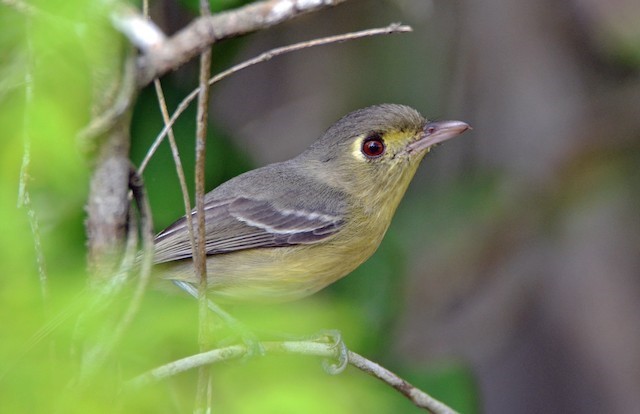Birdfinding.info ⇒ Easy to find at most of the commonly visited Cuban sites, such as Península de Guanahacabibes, Viñales, and La Güira National Parks, the Zapata Swamp region, and Cayo Coco.
Cuban Vireo
Vireo gundlachii
Endemic to Cuba and its satellite islands, where it is widespread and common in all types of woodlands and scrub. Found throughout Cuba, Isla de la Juventud, and most of the nearby keys.
There are a few recent records from the Florida Keys.
Identification
A drab, mostly unmarked vireo with a unique face, dominated by an apparently outsized eye, a pale postocular crescent and lore, and a large, pale bill. Its big-eyed appearance is due to bare dark skin that surrounds the eye.
The upperparts are plain grayish-brown, with two narrow wingbars that are sometimes imperceptible. The underparts are essentially uniform and may be either whitish, grayish, or yellowish.

Cuban Vireo. (Playa Larga, Matanzas, Cuba; March 16, 2015.) © Kjell Wallin
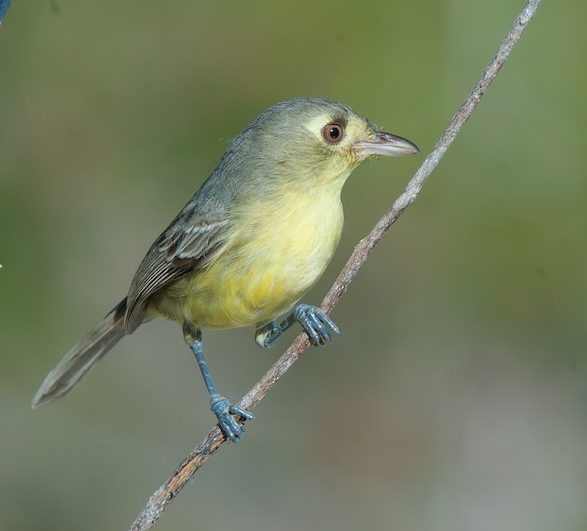
Cuban Vireo. (Guantánamo Bay, Cuba; February 6, 2018.) © Wayne Fidler
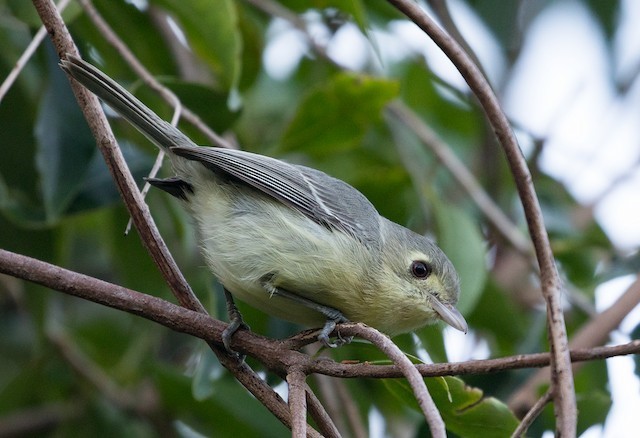
Cuban Vireo. (Playa Pesquero, Holguín, Cuba; February 18, 2018.) © Suzanne Labbé
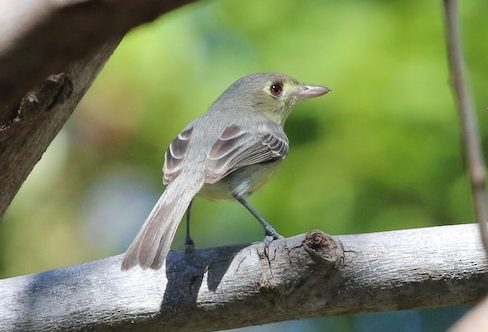
Cuban Vireo. (Cayo Coco, Ciego de Ávila, Cuba; March 28, 2017.) © Vicki Sandage
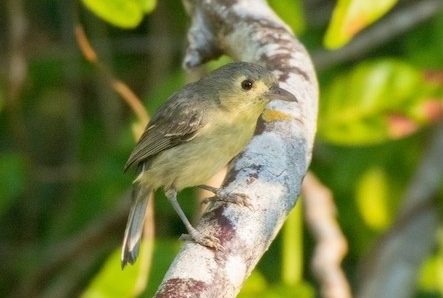
Cuban Vireo. (Cayo Paredón Grande, Ciego de Ávila, Cuba; March 1, 2018.) © Jean-Sébastien Guénette
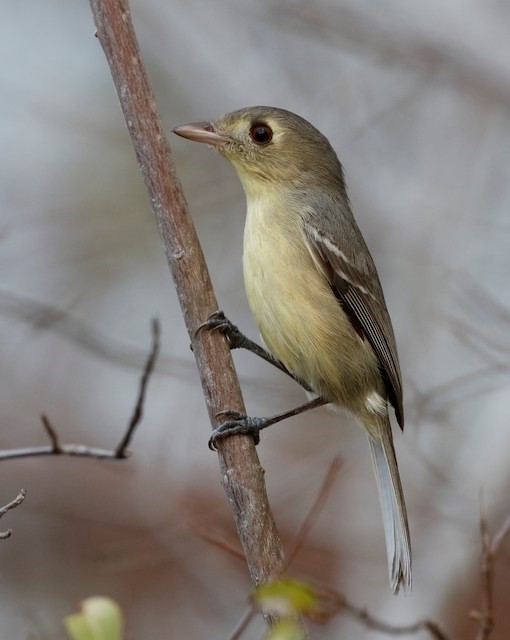
Cuban Vireo. (Cayo Guillermo, Ciego de Ávila, Cuba; March 9, 2017.) © Timo Mitzen
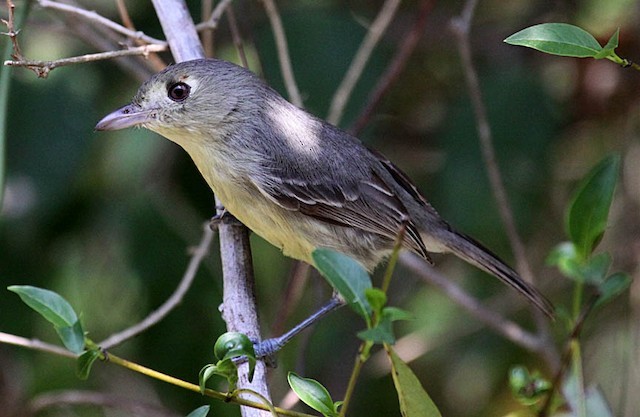
Cuban Vireo. (El Baga Park, Cayo Coco, Ciego de Ávila, Cuba; March 29, 2010.) © Mark Dennis

Cuban Vireo. (Camagüey, Cuba; February 26, 2018.) © Arco Huang
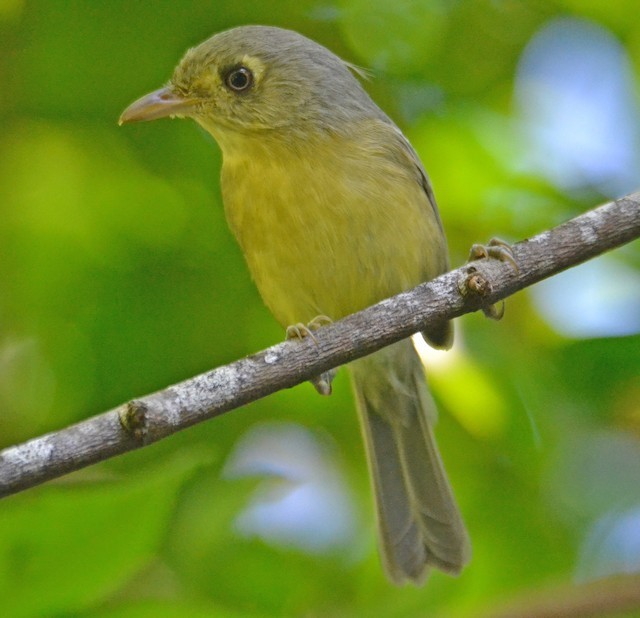
Cuban Vireo. (Bermejas Wildlife Refuge, Matanzas, Cuba; November 7, 2017.) © Michael J. Good
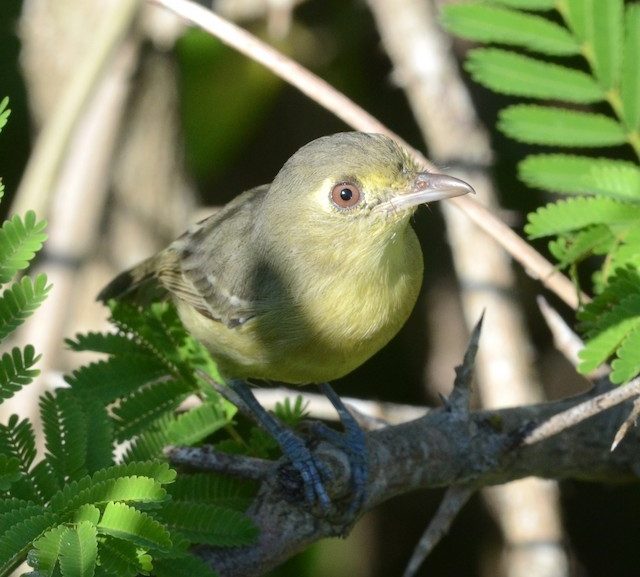
Cuban Vireo. (Playa Giron, Matanzas, Cuba; October 15, 2017.) © Nikolaj Mølgaard Thomsen
Voice. Typical songs are flycatcher-like, often a 3-syllable WITchee-whurrr! There are many variations, most of which use similar components, but alter the phrasing: Including some 2-syllable variants:
Notes
Polytypic species consisting of four recognized subspecies.
References
Brewer, D. 2018. Cuban Vireo (Vireo gundlachii). In Handbook of the Birds of the World Alive (J. del Hoyo, A. Elliott, J. Sargatal, D.A. Christie, and E. de Juana, eds.). Lynx Edicions, Barcelona. https://www.hbw.com/node/61247. (Accessed November 18, 2018.)
eBird. 2018. eBird: An online database of bird distribution and abundance. Cornell Lab of Ornithology, Ithaca, N.Y. http://www.ebird.org. (Accessed November 18, 2018.)
Garrido, O.H, and A. Kirkconnell. 2000. Field Guide to the Birds of Cuba. Cornell University Press, Ithaca, N.Y.
Navarro, N. 2015. Field Guide to the Endemic Birds of Cuba. Ediciones Nuevos Mundos, St. Augustine, Florida.
Raffaele, H., J. Wiley, O. Garrido, A. Keith, and J. Raffaele. 1998. A Guide to the Birds of the West Indies. Princeton University Press, Princeton, N.J.
